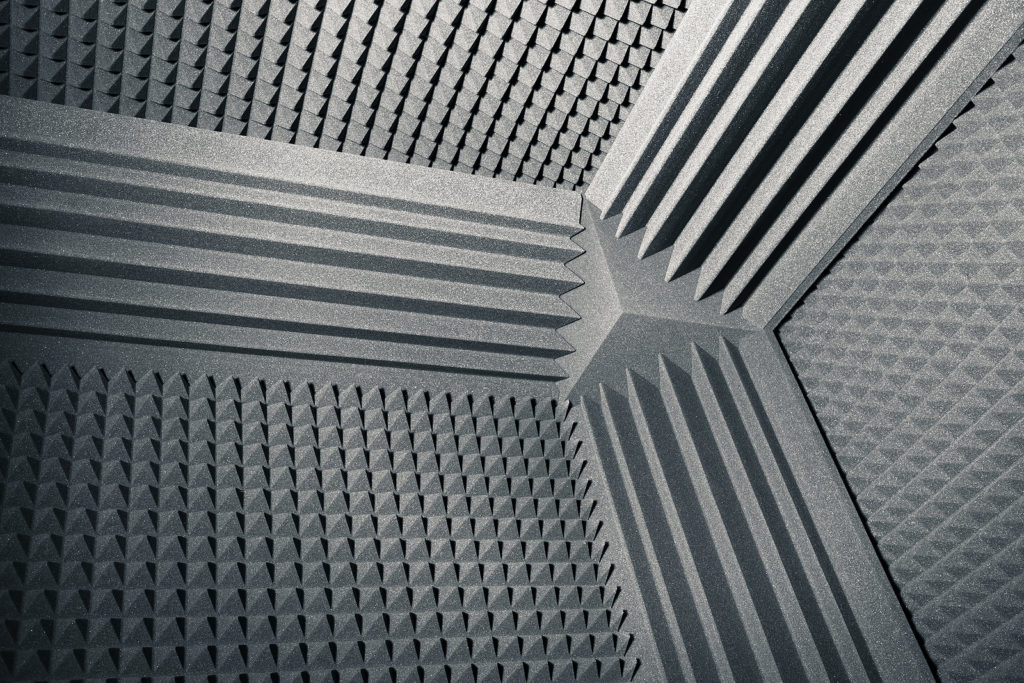
Before we examine corner bass traps or any other type of low-frequency absorption technology, let’s examine what these terms mean. First, there is no such thing as a bass trap”. Low frequency energy is not “trapped” by anything. It can be absorbed and barriers can be built to reduce the transmission of it through our walls. It is not trapped by any technology due to the wavelength of each low frequency.
Low-frequency or “bass” energy is not trapped because wavelengths of energy below 100 Hz. are long and tall. A 30 hz. a wavelength which is very low-frequency is 38′ long. How is a wavelength of this size going to be trapped by anything. It is not trapped. Some of it is absorbed. Some go right through the cabinet or technology. Some low-frequency energy is reflected from the cabinet or technology itself. There is no “trapping” going on here in this process.
Axial Modes: https://www.acousticfields.com/differences-axial-tangential-oblique-modes/
Room Modes: https://en.wikipedia.org/wiki/Room_modes
The first thing that we must realize is that the corners of our rooms is where we go to treat low-frequency energy issues within our rooms. Three are three types of low-frequency issues within our room. We have axial, tangential, and oblique. Axial are the strongest and most audible. By definition axial modes are produced by unwanted or too long wavelengths fitting between two parallel surface areas. In our small rooms these areas are sidewalls to sidewalls, front to rear wall, and floor to ceiling surface areas. It is not the corners. The corners only represent a small fraction of the surface area of the entire wall surface. Corner bass traps deal with the energy in the corners of the room but not the energy across the entire wall surface. Why would you just treat the room corners when the entire wall surface area is producing the modal issues. You are holding up a feather to stop a tornado. We must use the appropriate technology type, amount, and position it properly across the complete wall surface area.There are three types of passive, low-frequency management that can be used within corner bass traps.There is Helmholtz, Membrane, and Diaphragmatic. Let’s take a look at each one.
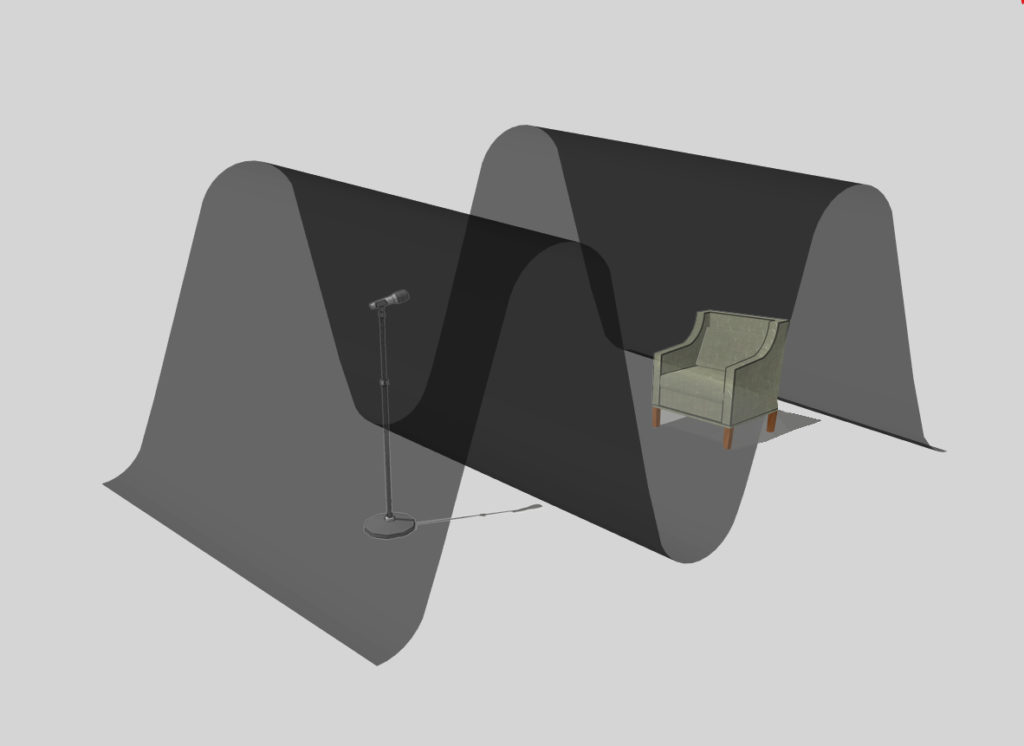
Helmholtz resonators are cabinets or tubes with slots in them to allow for air movement and pressure changes. The depth or length of the tube or cabinet determines the resonant frequency at which the unit absorbs energy at. Frequencies below the resonant frequency of the resonator are not absorbed. Frequencies above the resonant frequency are absorbed. Helmholtz resonators are frequency specific and have a narrow frequency range of absorption. Due to this limitation you must use many units of different depths and sizes. Membrane absorbers are the cousin to diaphragmatic absorbers. They have a membrane that vibrates in sympathy to the sound pressure exerted upon them by the pressure in your room. The membrane is a rubber or vinyl type material. Like the Helmholtz, the membrane’s frequency of resonance is produced by the cabinet depth. Due to the lighter weight of the membrane and the cabinet density they absorb energy as designed but their rate of absorption is not what can be achieved with a diaphragmatic absorber.
A diaphragmatic absorber has a cabinet just like the Helmholtz and the membrane. The diaphragmatic absorber has a front wall diaphragm that vibrates in sympathy with the energy exerted upon it. The front wall or diaphragm has a higher density or weight than the membrane absorber. The cabinet of a diaphragmatic absorber is more dense and offers the cabinet a more rigid structure which makes the unit much heavier in weight than a Helmholtz or membrane absorber. The increased density of the front diaphram along with the cabinet increase in density produces a product that has a broad range of coverage across the frequency spectrum. Inside the cabinet you can use various fill types of material. The internal cabinet fill material has a direct impact on the rate of absorption. The rate of absorption determines how much energy is absorbed at what frequency. The cabinet depth determines the level or resonant frequency of the unit. The internal cabinet fill material produces the amount of absorption at each octave band.
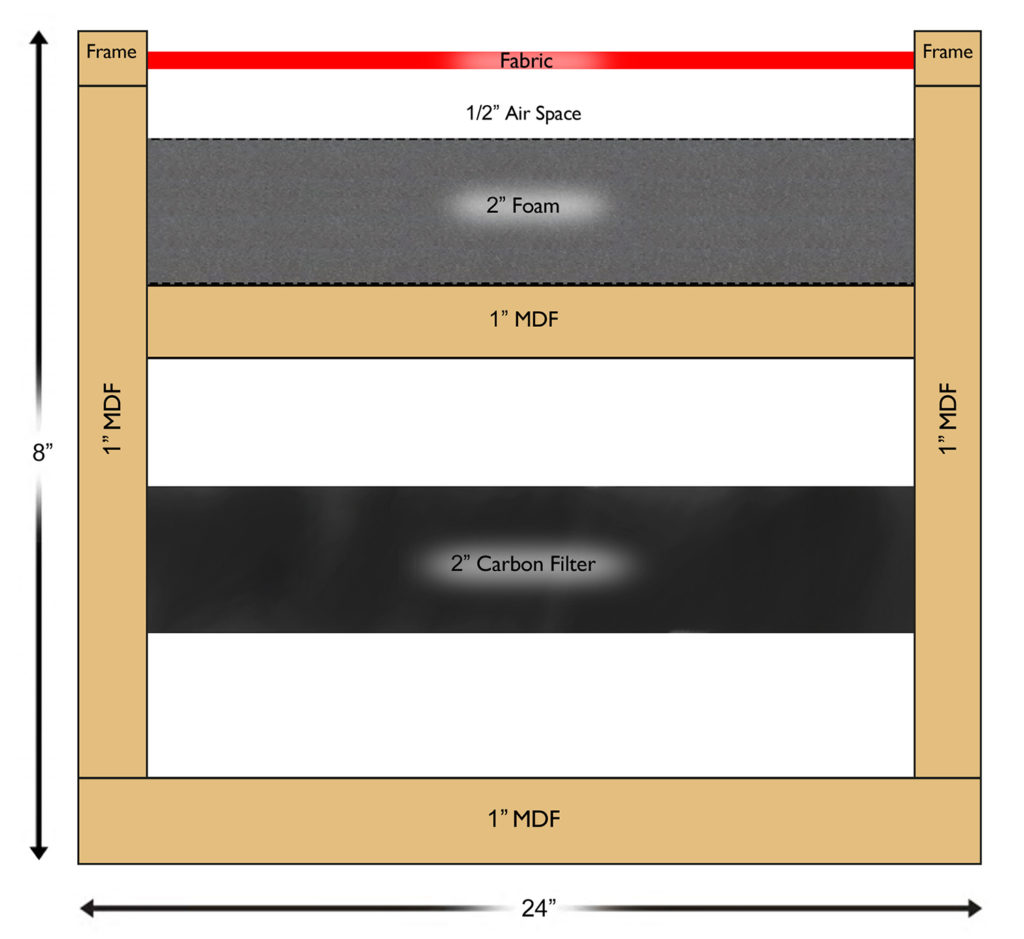
We have taken the diaphragmatic absorber and increased its power to new levels. We have taken the single front wall diaphragm construction and doubled it. We have two front walls that are different densities. This creates a phase relationship that contributes to the increased amount of absorption. The front wall or diaphragm slows the energy down before it enters the cabinet. Once inside the cabinet it “sees” a pressure reduction inside the cabinet. Remember that low frequency absorption is a pressure based technology. We must use pressure inside the cabinet to reduce the pressure inside our rooms through the diaphragmatic absorption process. Once inside the cabinet, it meets our proprietary carbon technology. Our carbon technology has a large surface area of absorption so when placed inside the cabinet it reduces the atmospheric pressure inside the cabinet. A low frequency pressure wave enters the cabinet and sees a much lower atmospheric pressure. When this occurs the wave collapses and absorption occurs. Pound for pound and square foot per square foot of surface area a diaphragmatic absorber is the most powerful of the three types and covers a broader frequency range. Since space is at a premium in our small rooms, we need as much low-frequency horsepower as we can get in our available wall space requirements which are not just the corners. Corner bass traps are a bandaid on a much larger problem.
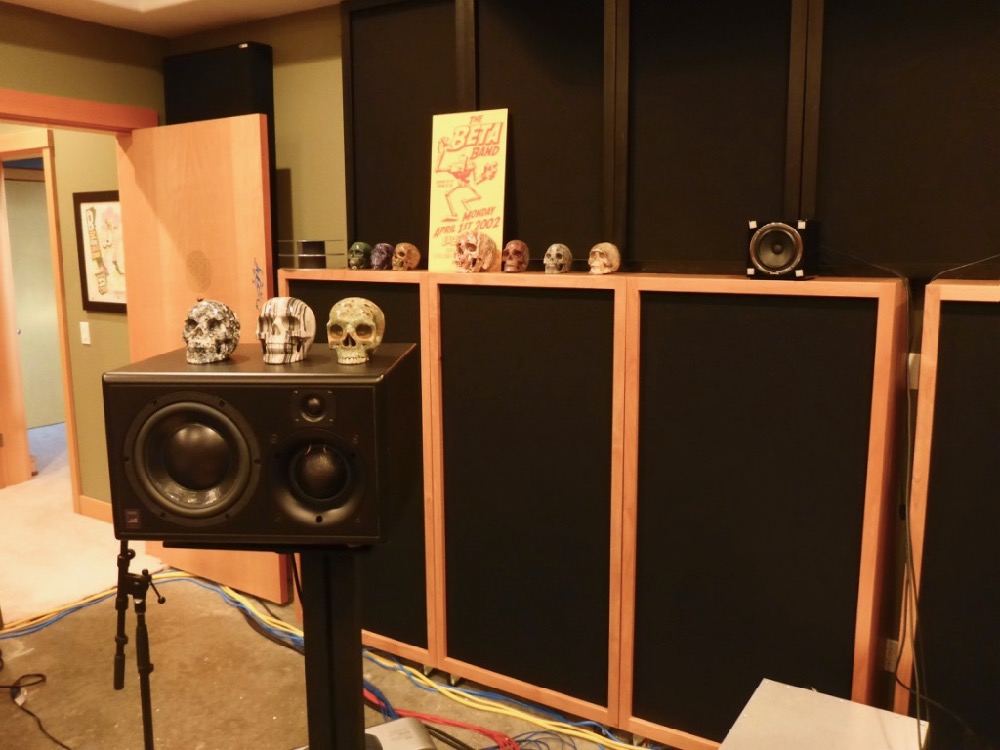
Why do companies sell corner bass traps? They sell them for two main reasons. The first reason is that most people do not have any acoustical treatment in the corners of your rooms. This psychologically assists the buying decision. If you are experiencing low-frequency modal issues within your room and you don’t have anything in the corners of your room already, then if you place this unit in the corners of your room, all your issues will be resolved. I have heard and seen it many times. Buy our corner bass traps and your low-frequency issues will be resolved. This is simply not possible. Treating the corners of a wall surface area when the entire wall along with its opposite wall is producing the problem is simply not possible. Remember our definition of an axial modal issue. An axial modal issue is the unwanted pressure build up between two parallel wall surface areas, not two parallel corners. Secondly, companies misrepresent the power of a corner treatment. They make claims that their unit can reach across the wall surface area and treat the whole wall surface area. This is utter nonsense and goes directly against our laws of physics.
About Us At Acoustic Fields: https://www.acousticfields.com/about/


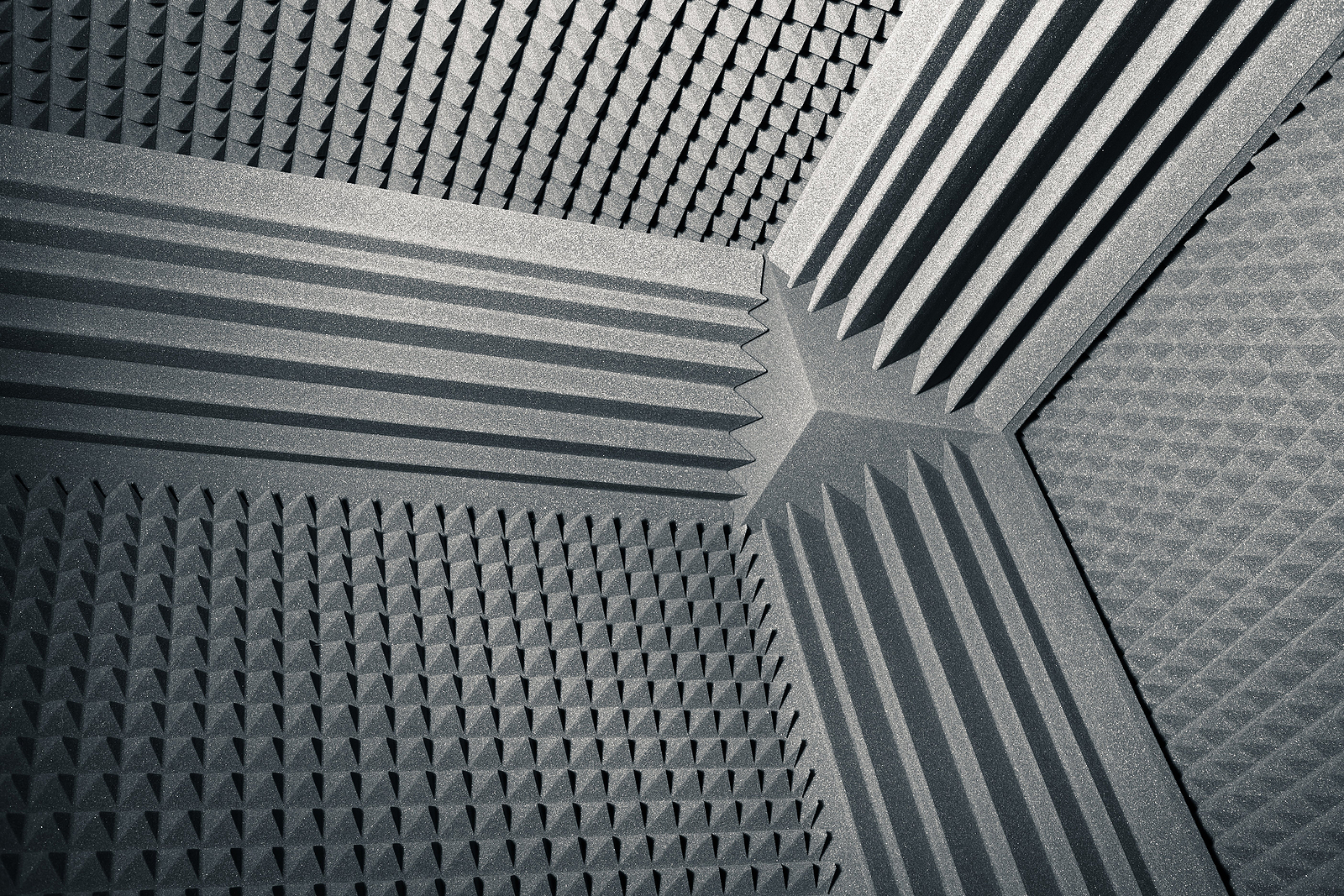

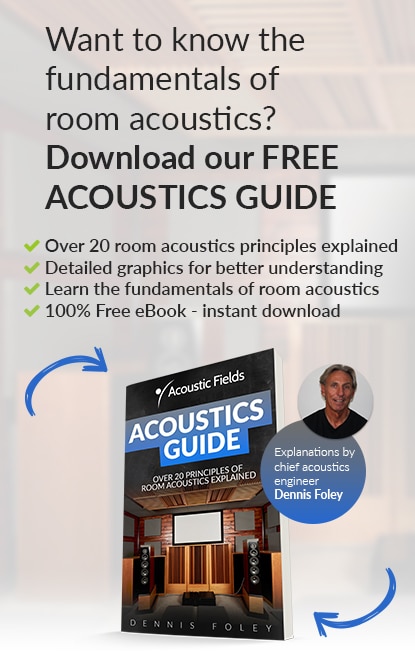



If you know the frequency and amplitude of the reflection, you have a better chance of identifying sources.
Can the quality of a sound reflection identify the reflection source?
Use whatever floor type suits your usage. Carpet should have a carpet pad under the carpet. Hardwood floors should have…
Hello. This article mentions choosing a sound absorbing carpet and a pad. Could you please give examples of products? I…